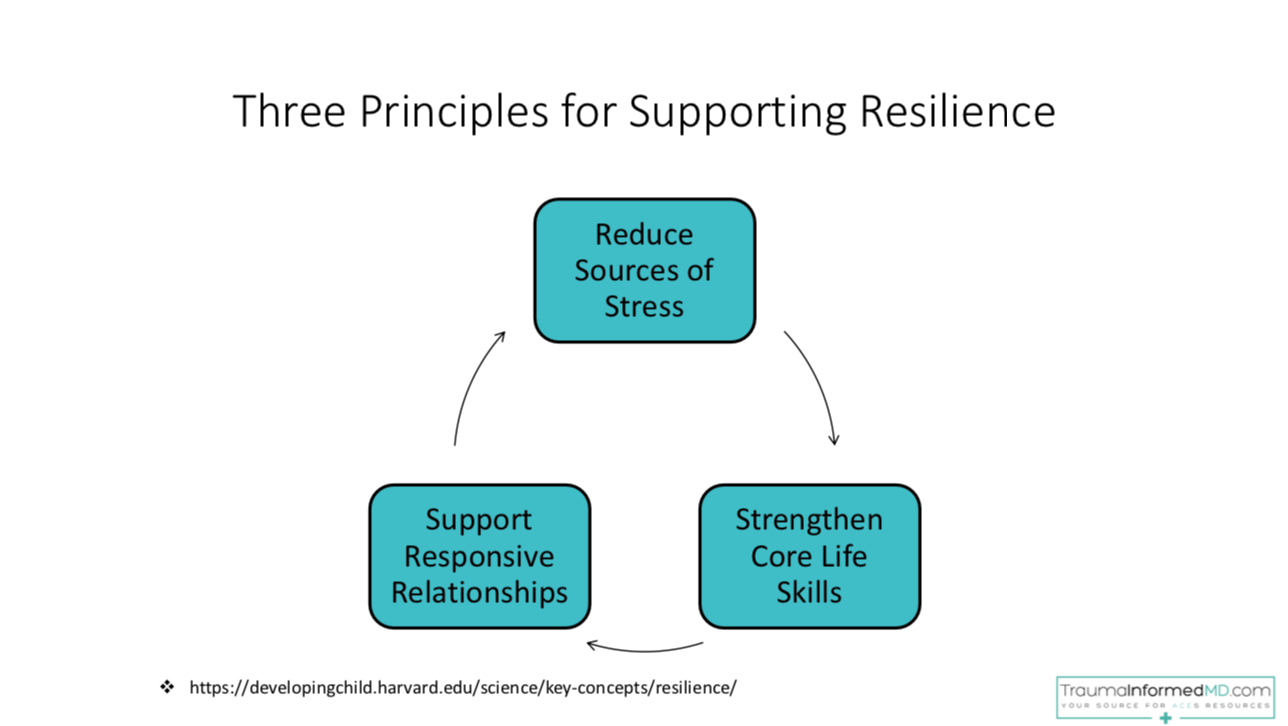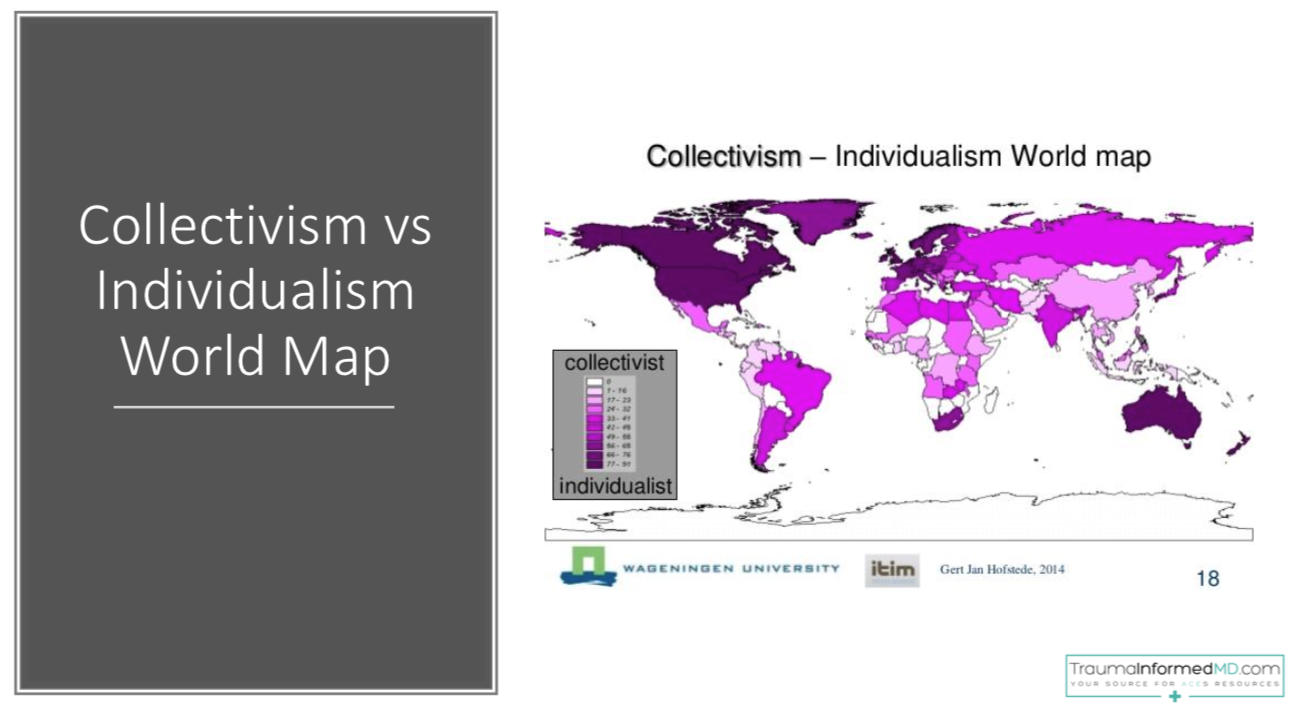WHAT IS RESILIENCE?
WHAT DETERMINES RESILIENCE?
Internal Resources
RESILIENCE BUILDING
- the capability of a strained body to recover its size and shape after deformation caused especially by compressive stress
- an ability to recover from or adjust easily to misfortune or change
WHAT DETERMINES RESILIENCE?
Internal Resources
- Genetic factors
- Talents
- Aptitudes
- Personality or temperament
- A secure attachment figure in early childhood
- At least one supportive adult
- Supportive extended family relationships
- Living in a safe, stable, nurturing environment
- Access to food, clothing, shelter, warmth, without worry about needs being met
RESILIENCE BUILDING
- Resilience can be increased or improved at any time during the lifespan.
- Things like regular physical exercise, healthy eating, methods of stress reduction and activities that promote creative problem solving and emotional regulation in adults can help to heal from previous toxic stress and create resilience to future adversity.
- Adults who practice these things can model this behavior for their children, thereby building resilience in the next generation.
REDUCE SOURCES OF STRESS
- Decrease exposure to violence
- Support reliable income, food, clothing, shelter
- Improve parenting skills, reduce conflict
- Improve access to quality healthcare
- Improve access to quality childcare
- Improve access to quality schools
- Ensure access to mental healthcare when needed
- Support for substance abuse issues in the family
- Support access to reliable and affordable transportation
STRENGTHEN CORE LIFE SKILLS
- Job training that matches both personal skills and local labor market
- Financial literacy training
- Parenting and early childhood development training for teens and young adults
- Build a sense of self-efficacy, perceived control, and self worth
- Provide opportunities to strengthen adaptive skills and self-regulation
- Nutrition and physical education
- Basic Home-Economics skills, cooking, sewing, car maintenance, etc.
- Participation in groups such as theater, choir, band, athletic teams that require getting along with others and working together toward a goal, or in harmony
- Support Arts and Music Education as a creative outlet for processing adversity and building resilience
SUPPORT RESPONSIVE RELATIONSHIPS
- Support mothers in the pre and post-partum period
- Parental leave policies, allowing for bonding and attachment of both parents
- Encourage extended family relationships when supportive
- Encourage family traits of sticking together, watching out for each other
- Encourage healthy relationships with mentors, teachers, coaches, religious leaders, etc.
- Encourage healthy relationships with peers
- Support Marriage counseling and enrichment
- Support sources of Faith, Hope, and Cultural Traditions
WHO CAN HELP BUILD RESILIENCE?
Every part of a family and community can help build resilience by using the above 3 principles to plan how to use time and resources
- Parents and Siblings
- Extended Families
- Faith Communities
- Civic organizations
- Nonprofit Foundations
- Schools
- Law Enforcement
- Foster Homes and Support Agencies
- Public Agencies and Governments
- Prisons and Juvenile Justice Programs
Protective And Compensatory Experiences
Positive Parenting Practices
- Singing and Story Telling
- Reading Together
- Family Meals
- Family Outings
- Playtime with Peers
- Limit TV Time
SUPERPOWERS!
Children who grow up with significant adversity have the potential to develop certain abilities more than other children.
- Empathy
- Ability to sense others’ moods and adjust interaction accordingly
- Awareness and observation of their environment
- Sense of directions
- Ability to know what it will take to survive a dangerous or challenging situation
- Ability to lead others
- Ability to think outside the box, creative problem solving
- Creative expressions such as music, art and writing
EMINENT AND CREATIVE PEOPLE
- In a search of encyclopedias, 25% of eminent people lost one parent before the age of 10, 45% before the age of 20.
- Close to one third of U.S Presidents lost one parent as a child.
- Jews represent 0.2% of the world’s population, but have earned 22% of Nobel prizes. (Also one of the most persecuted people historically, especially in 20th century Europe)
- Many of the most famous artists and musician have overcome childhood adversity.
RELATIONSHIPS MATTER
- Maintaining at least one stable, healthy relationship with an encouraging adult is one of the most important factors for developing resilience and overcoming adversity.
- The more relationships a child has with extended family and community members, the more likely this will happen, whether the parents are able be there for the child or not.
- Secure attachment with a primary caregiver is probably the most crucial factor for developing resilience. When this does not occur, that is when all the other community interventions become vital, as well as community support of the primary caregiver relationship.
WESTERN CULTURE VS. EASTERN CULTURE
ALONE IN AMERICA
COLLECTIVISM VALUES RELATIONSHIPS
- As you can see from the map, countries with more western culture such as the US, Canada, Western Europe and Australia have a more Individualistic Society. Being independent is valued and expected. In many ways this has been a positive thing for these societies in fostering innovation and technological progress.
- However, let’s keep in mind that individualism may not always foster the family unit and connected relationships that build resilience in children.
- Western culture has become a society where each family unit lives separately and often in different cities, states, or countries. This makes it difficult for extended family to be of support when a family unit comes under stress or a disaster of some kind.
- When families from Eastern or Latin cultures immigrate to the US and younger generations assimilate, they also tend to move toward the goal of individualism.
ALONE IN AMERICA
- According to a recent Wall Street Journal Article, 1 in 11 Americans over the age of 50 does not have a spouse, partner, or living child. That is eight million people and is projected to grow.
- Loneliness is “as closely linked to early mortality as smoking up to 15 cigarettes a day or more than 6 alcoholic drinks per day.”
- “Baby boomers prized individuality and generally had fewer children and ended marriages in greater numbers than previous generations. More than 1 in 4 baby boomers is divorced or never married. 1 in 6 lives alone.”
- In 2016, 27% of women over 50 were widowed or never married compared with 16% of men.
COLLECTIVISM VALUES RELATIONSHIPS
- There are, of course, also negatives to collectivism. Sometimes being in constant, near proximity can also cause stress and conflict.
- But let’s take a step back and think of how we can balance these extremes. Western society may want to showcase the boost to resilience that collectivism offers, in order to push back at the cultural tide of individualism.
- Families should take into account the effect that the loss of extended family support has on children in their moves and living arrangements.
- Parents and grandparents should be valued and take some responsibility for supporting younger generations, emotionally and relationally.
- When extended family is absent, communities, such as churches, need to find ways to fill those gaps for the children and young families. Consider that a mother with post-partum depression may not be noticed without close family or friends around, and the baby may unintentionally suffer from emotional or physical neglect as a result.
RESILIENCE IS ACHIEVABLE
Let’s all work together for the good of the children
in our communities!
Please visit the pages on our site relevant to you,
and follow some of the links
for more information.
Proudly powered by Weebly



